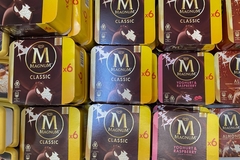Cheese market trends in Mexico

Cheese plays a central role in Mexican cuisine, adding flavor, texture, and versatility to a wide variety of dishes. While per capita consumption remains comparatively low, rising purchasing power and evolving consumer habits are creating opportunities for growth.
Innova Market Insights’ latest Innova360 research on cheese trends highlights the impact of health-conscious options, flavor innovation, new varieties, and product formats. It also points to opportunities for brands to stay relevant in a changing marketplace.
Mexican cheese market trends
The Mexican cheese market continues on a steady growth path, with sales and volume projected to expand at a 3% compound annual growth rate (CAGR) through 2027. Rising incomes among the middle class are contributing to this upward trajectory.
Even so, Mexico still records comparatively low cheese consumption per person. High relative cost keeps cheese from being as widely consumed as traditional staples.
Cheese product launch trends
Cheese innovation is accelerating, with product launches increasing at an 8% CAGR over the past five years. This growth rate outpaces total F&B introductions in the market.
Semi-hard and hard cheeses have led the way over the past year, supported by consumer demand for lower-lactose, less processed, and more natural alternatives. Local favorites such as Manchego, Chihuahua, and Cotija remain central, offering mild, nutty, salty, and crumbly qualities that appeal to national tastes.
Premium flavors, authenticity, and convenient formats are further broadening the consumer base, particularly among younger demographics.
Mexican cheese claims
Ethical packaging claims are emerging in the market, with animal welfare claims gaining visibility in the past year. Still, Mexico has fewer ethical-label launches than other regions, reflecting limited awareness and the absence of formal labeling guidelines.
 Traditional Mexican cheese is usually clean label, reducing the need for packaging claims.Clean label cues — such as “no additives/preservatives” and “organic”— are well recognized. However, traditional Mexican cheese-making processes already involve minimal processing and limited use of additives, which reduces the need for extensive labeling.
Traditional Mexican cheese is usually clean label, reducing the need for packaging claims.Clean label cues — such as “no additives/preservatives” and “organic”— are well recognized. However, traditional Mexican cheese-making processes already involve minimal processing and limited use of additives, which reduces the need for extensive labeling.
Nutritional positioning is becoming more prominent. High-protein claims feature strongly, supported by growing awareness of protein-rich diets. Gluten-free and lactose-free options are also increasing, while newer claims such as bone health and fiber are beginning to appear in the market.
Cheese ingredients and flavors trends
Consumers in Mexico show a strong preference for unflavored cheese, yet experimentation is rising. In Latin America more broadly, spicy and fruit varieties are gaining traction. Emerging flavors include chili, black garlic oregano, green apple, blueberry, and raspberry.
Dairy and salt remain core ingredients, alongside enzymes, thickeners, and stabilizers. Use of thickeners and firming agents has increased to meet expectations around texture, quality, and safety.
Coloring trends are also shifting, with annatto adopted as a natural alternative to artificial colorants. Its warm hues enhance visual appeal while supporting a more traditional positioning.
Consumer cheese preferences
Dairy cheese remains a top choice for Mexican consumers, reflecting demand for convenience, diverse food options, and urban migration. Non-dairy alternatives, by contrast, face long-term investment needs to catch up with global plant-based momentum.
Older consumers tend to buy dairy cheese more frequently, supported by higher incomes. Their decisions are shaped by food safety, reduced fat, lack of artificial ingredients, and the presence of functional components.
What’s next in Mexican cheese trends?
Cheese is a staple in Mexican cuisine, yet consumer lifestyles and preferences are reshaping its role in the diet. Urban shoppers increasingly seek products that are both convenient and nutritious, positioning cheese as an attractive snack option.
Clean label storytelling, including references to traditional production methods and locally sourced ingredients, may capture attention. Value-focused offerings and promotions could help sustain demand during inflationary pressures.
Future growth opportunities lie in premium and artisanal cheeses, particularly semi-hard and hard varieties suited for charcuterie. Smaller pack sizes, single-serve options, cubes, and sticks are likely to attract busy urban consumers. Health-oriented developments — including reduced-fat, reduced-lactose, and A2-milk-based cheeses — can further expand appeal.
Non-dairy cheese, while still emerging, could gain traction in the long run as plant-based eating spreads. At the same time, greater availability of international selections may spark interest in global flavors and inspire experimentation beyond traditional favorites.
Overall, brands that deliver variety, convenience, and nutritional benefits while maintaining a link to Mexican culinary traditions are positioned to capture growth in the years ahead.
This article is based on the Innova Market Insights report, “Cheese & Cheese Alternatives in Mexico.”


















